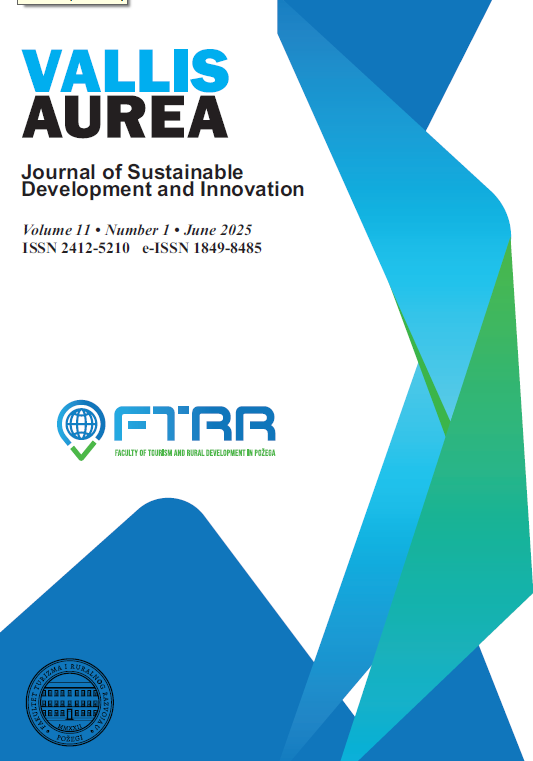Analysis of Computer Network User's Activities Using Support Vector Machine (svm) and Long Short-Term Memory (lstm) Network
DOI:
https://doi.org/10.62598/JVA.11.1.5.16Keywords:
network, user, activities, SVM, LSTM, managementAbstract
The rapid growth of number of network users have led to a significant rise in network traffic. Analysing user activities within computer networks is essential for optimizing performance, enhancing security, and improving user experience. This study explores the application of machine learning techniques, specifically Support Vector Machine (SVM) and Long Short-Term Memory (LSTM) networks, to analyse computer network user activities. SVM is employed for its effectiveness in binary classification tasks and its ability to handle high-dimensional data, making it suitable for identifying distinct user activities based on network traffic patterns. Conversely, LSTM networks was utilized to capture temporal dependencies in sequential data, allowing for the prediction of future user actions based on their historical activities. The precision, recall, FI-score and accuracy results for SVM model for analysing computer network user’s activities are 96.00, 99.00, 98.00 and 95.40 respectively. While the precision, recall, FI-score and accuracy results for LSTM model for analysing computer network user’s activities are 90.00, 91.00, 91.21 and 93.50 respectively. Trailing to this, the SVM has a better performance than the LSTM model. Therefore, this research contributes to the field of network analytics by offering insights that will improve network management strategies, resource allocation, and security measures.
References
1. Rojas, J. S.; Pekar, A.; Rendón, Á.; Corrales, J. C. (2020). Smart user consumption profiling: Incremental learning-based OTT service degradation. IEEE access, 8, 207426-207442.
2. Elijah A. A.; Odeniyi O. A.; Olajide B. O.; Temitope O. O.; Paul O. U.; Emmanuel B.; Atiba T. J.; Adeosun T. H. (2024). Application of Enhanced Triple Modular Redundancy (ETMR) Architecture and Markov Processes to Eliminate Operational Downtime in Traffic Light System, Asian Research Journal of Current Sciences, 6(1): 236-248.
3. Jain M. K. (2021). The Rise of OTT Platform: Changing Consumer Preferences. EPRA International Journal of Multidisciplinary Research (IJMR), 7(6), 257-261.
4. Rojas J. S.; Rendon, A.; Corrales, J. C. (2019). Consumption behavior analysis of over the top services: Incremental learning or traditional methods? IEEE Access, 7, 136581-136591.
5. Cisco, (2017). Cisco Visual Networking Index: Global Mobile Data Traffic Forecast Update, 2016–2021 White Paper. Retrieved March 11, 2018, from from https://www.cisco.com/c/en/us/solutions/collateral/service-provider/
visual-networking-index-vni/mobile-white-paper-c11-520862.html.
6. Okpor J.; Olajide B. O.; Tsokwa I. D.; Ehizuenlen E. P. (2024). An ECG-Based Model for Heart Arrhythmia Classification using Deep Learning, FUW Trend in Science and Technology Journal, 2024; 9(2): 218-224.
7. Madugu J. O.; Olajide B. O.; Okpor J. (2023). Smart User Consumption Analysis Using Support Vector Machine and Multilayer Perceptron, Asian Research Journal of Current Science, 5(1): 102-114.
8. Olajide B. O.; James O.; Chukuwudi J. I.; Temitope O. O.; Adeogun A. E. (2024). A Child Dietary Prescription Model Using Artificial Neural Network and Fuzzy Logic, International Journal of Research Publication and Reviews, doi:https//doi.org/10.55248/gengpi.5.0924.2423, 5(9): 750-758.
9. Okpor J.; Olajide B. O.; Madugu J. O. (2023). Over-the-top Applications Traffic Analysis Model for Networks Using Multilayer Perceptron (MLP) and Long Short-Term Memory (LSTM), Asian Journal of Pure and Applied Mathematics, 7(1): 55-66.
10. Oluranti J; Sanjay M; Victor O. (2021). Comparative Analysis of Machine Learning Techniques for Network Traffic Classification, IOP Conference series: Earth and environmental Science, 4th International Conference on Science and Sustainable Development (ICSSD2020). 1-15. IOP Publishing doi:10.1088/1755-1315/655/1/012025.
11. Vinupaul M. V.; Bhattacharjee, R.; Rajesh R; Kumar G. S. (2016). User characterization through network flow analysis. International Conference on Data Science and Engineering (ICDSE). 1-6.
12. Radha R. (2013). Characterization of youtube video streaming traffic, a master’s thesis submitted to Department of Electrical Engineering, School of Computing Bliekinge Institute of Technology, Kariskrona, Sweden. 1- 50.
13. Goeffery E.; Adrian M.; Aizoman A. (2014). Development of unsupervised machine learning Model for Internet Traffic Identification, Conference paper submitted to Department of Computer Science University of Calgary Calgary, AB, Canada T2N 1N4. 22-30. DOI: 10.1109/GLOCOM.2006.443
14. Juan S. R.; Adrian P.; Alvaro R.; Juan C. C. (2020). Smart User Consumption Profiling: Incremental Learning Based OTT Service Degradation, IEEE Access. 8: 23-30.
15. Jeffery E.; Anirban M.; Martin A. (2007). Internet Traffic Identification using Machine Learning, Conference paper submitted to Department of Computer Science University of Calgary Calgary, AB, Canada T2N1N4, 22-30.DOI: 10.1109/GLOCOM.2006.443 · Source: IEEE Xplore
16. Olajide B. O.; Andrew I. W. (2023): “Bank Term Deposit Service Patronage Forecasting Using Machine Learning”, in International Journal Vallis Aurea (Journal of Sustainable Development and Innovation), 9(2): 55-64.
Downloads
Published
Issue
Section
License
Copyright (c) 2025 Vallis Aurea

This work is licensed under a Creative Commons Attribution-NonCommercial-NoDerivatives 4.0 International License.
Authors of papers for publishing in the journal agree under a Creative Commons Attribution-NonCommercial-NoDerivatives 4.0 International License.https://creativecommons.org/licenses/by-nc-nd/4.0/







